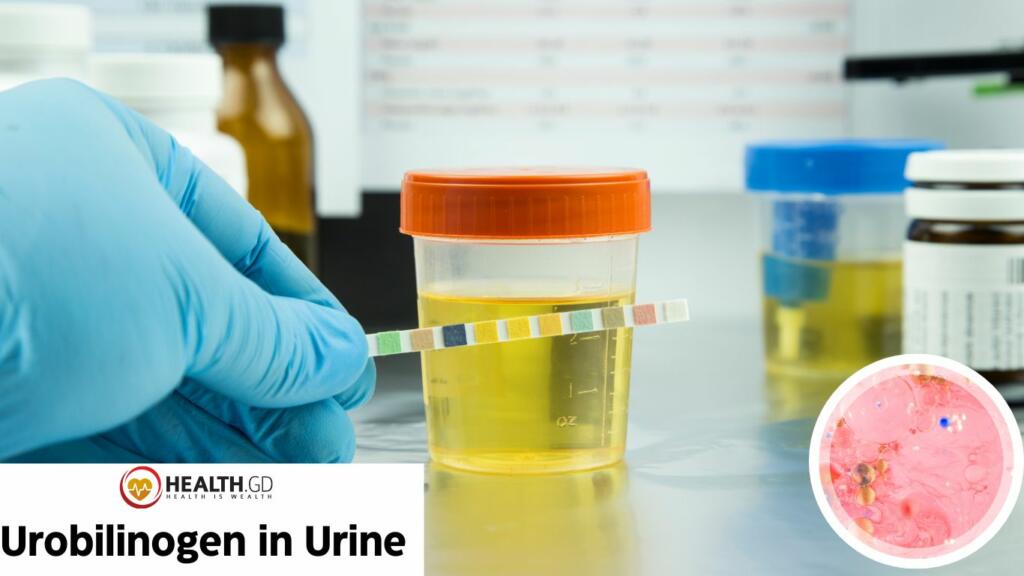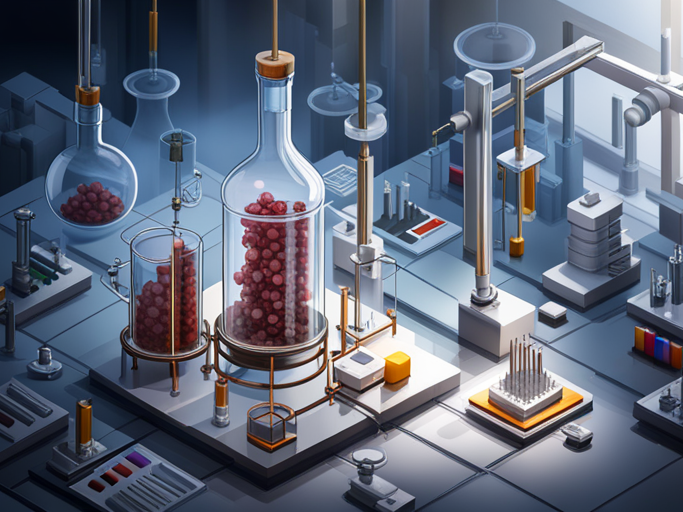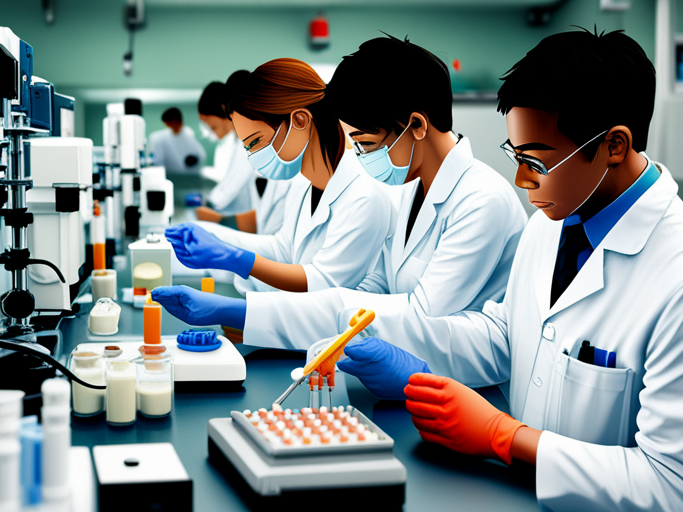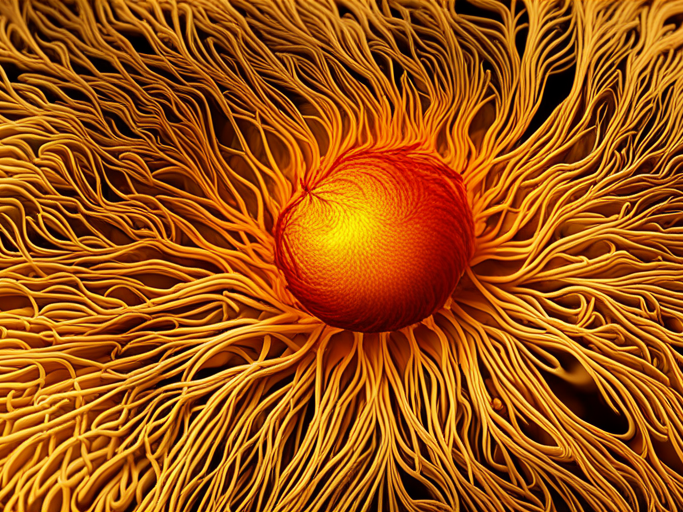What is Urobilinogen?
Urobilinogen is a colorless byproduct of bilirubin metabolism that occurs naturally in the human body. It is formed in the intestines and excreted through feces and Urine. The presence of Urobilinogen in Urine can provide valuable insights into a person’s overall health. This article will explore the formation of Urobilinogen, its normal levels, testing methods, and potential causes of abnormal urobilinogen levels.

How is Urobilinogen formed?
Bilirubin is a byproduct produced when hemoglobin, the protein responsible for carrying oxygen in your red blood cells, breaks down. When your red blood cells reach the end of their lifespan, usually around 120 days, they are broken down in the spleen and liver. During this process, bilirubin is released into the bloodstream and then carried to the liver, where it binds with a protein called albumin. This form of bilirubin is known as unconjugated bilirubin.

Once in the liver, unconjugated bilirubin transforms and becomes water-soluble. This new form, called conjugated bilirubin, can be excreted into the intestines through a substance called bile. Within the intestines, the bilirubin is further broken down by the bacteria present in your gut.
It is converted into a substance called Urobilinogen. Some of the Urobilinogen is reabsorbed into the bloodstream, eventually reaching the kidneys for excretion through Urine. The majority of Urobilinogen, however, is converted into stercobilin, which is then excreted in your feces.
What is Urobilinogen in urine tests?
The Urobilinogen in urine test measures the level of Urobilinogen present in your Urine. It is usual for Urine to contain a certain amount of Urobilinogen. However, if the test shows excessive Urobilinogen, it could indicate a liver disease such as hepatitis, cirrhosis, or certain types of anemia. On the other hand, if little or no Urobilinogen is detected in the Urine, it may be a sign of other issues related to your liver, gallbladder, or bile ducts.
Why should you take Urobilinogen Test?
Urobilinogen in urine test is part of a broader examination called urinalysis, which involves analyzing different cells, chemicals, and substances in your Urine. Urinalysis is commonly used to evaluate your overall health and can help diagnose liver diseases and other medical conditions.
Your doctor may recommend Urobilinogen in a urine test for a few reasons. Firstly, it could be part of your routine checkup to monitor your general health, including the functioning of your liver. If you have symptoms suggestive of liver disease or hemolytic anemia, this test may be ordered to gather more information about your condition.

The symptoms of liver disease can manifest in various ways, such as nausea, vomiting, lack of appetite, fatigue, weakness, jaundice (yellowing of the skin and eyes), abdominal swelling or pain, swelling in the ankles and legs, dark-colored Urine, light-colored stool, and frequent itching.
On the other hand, the symptoms of hemolytic anemia may include fatigue, dizziness, heart palpitations, headache, confusion, jaundice, and an enlarged liver or spleen.
By performing the Urobilinogen in urine test, your healthcare provider can assess the levels of this substance and gain insights into your liver function or the presence of hemolytic anemia. It can help them make an accurate diagnosis and develop an appropriate treatment plan for you.
Ehrlich’s test : Finding Urobilinogen in Urine
Ehrlich’s test is primarily performed to detect the presence of Urobilinogen in Urine. Also, this test helps us assess the functioning of the liver.
The function of Urobilinogen itself is to contribute to the color of Urine. It is converted to a yellow pigment called urobilin, which gives Urine its yellow color. Additionally, in the intestines, Urobilinogen is further converted to a brown pigment called stercobilin, which provides feces with its characteristic color.

During Ehrlich’s test, Ehrlich’s reagent (pdimethylaminobenzaldehyde) is added to the urine sample. This reagent reacts with Urobilinogen to produce a pink color. In a normal urine sample, the urobilinogen present will turn the urine pink.
To perform Ehrlich’s test, it is essential to use a fresh urine sample of 10 mL because Urobilinogen can convert to urobilin over time, which cannot be detected by routine tests. You will also need Ehrlich’s reagent, a glass tube, and a stopwatch.
The procedure involves adding 1 mL of Ehrlich’s reagent to 10 mL of Urine in a glass tube. The mixture should be thoroughly mixed and left to stand for 10 minutes. Afterward, observe the color of the solution by looking down into the tube held over a white surface. A cherry-red color indicates a positive result, while a pink color suggests the absence of Urobilinogen.
When reporting the result of Ehrlich’s test, a dark cherry-red color indicates increased Urobilinogen, while a pink color indicates normal Urobilinogen.
Test Procedure

To ensure accurate results and prevent contamination, following the proper instructions when collecting a urine sample is essential. Here is a step-by-step guide:
- Please wash your hands thoroughly with soap and water, and dry them properly.
- Open the container provided for the urine sample without touching the inside. It’s essential to maintain cleanliness.
- Use the cleansing wipe provided by a doctor to clean your genital area. If you are a male, wipe the entire head of the penis. For individuals with a foreskin, gently pull it back before cleaning. If you are female, separate the labia (folds of skin around the vagina) and wipe the inner sides from front to back.
- Begin urinating in the toilet for a few seconds, then pause the flow. Resume urinating, this time directing the urine stream into the container. Ensure that the container does not touch your body to maintain sterility.
- Collect at least an ounce or two of Urine into the container. The container should have markings indicating the required amount.
- Once you have collected the urine sample, finish urinating in the toilet.
- Securely close the container with the provided cap, following the instructions given.
- Return the container as instructed by your doctor.
Normal Urobilinogen Levels
Urobilinogen levels can vary based on several factors, including age, gender, diet, and medications. However, normal urobilinogen levels in Urine typically range from 0.2 to 1 mg/dL. They are considered low if your urobilinogen levels are below 0.2 mg/dL. On the other hand, levels above 1.0 mg/dL are considered high.
When the levels are low, it may not necessarily indicate a health problem. However, higher levels of Urobilinogen could indicate an underlying condition that needs attention.

What does High-level Urobilinogen in Urine indicate?
High levels of Urobilinogen in Urine can result from several factors, including hemolytic anemia, liver disease, and infections.
1. Hemolytic Anemia
Hemolytic anemia is when red blood cells are destroyed faster than they can be replaced, leading to increased bilirubin and urobilinogen production. Autoimmune disorders, genetic conditions, or exposure to certain medications or toxins can cause this.
2. Liver Disease
Liver diseases, such as cirrhosis or hepatitis, can impair the liver’s ability to process bilirubin, resulting in elevated urobilinogen levels. In such cases, urobilinogen levels can serve as an indicator of liver function and overall health.
3. Infections
Some infections, particularly those affecting the liver or blood, can also cause increased urobilinogen levels. This may occur due to increased bilirubin production as the body fights off the infection or due to liver damage caused by the disease.
What are the causes of High Urobilinogen levels in Urine?
One possible cause of elevated urobilinogen levels is liver disease or damage. Conditions such as viral hepatitis and liver cirrhosis can lead to increased levels of bilirubin, resulting in higher urobilinogen levels in the Urine. Urobilinogen levels can also correspond to blood levels of liver enzymes, such as ALT and AST, which tend to rise when there is liver damage.
Another factor that can contribute to higher urobilinogen levels is the excessive breakdown of red blood cells. Conditions that increase the destruction of red blood cells, such as hemolytic anemia, pernicious anemia, intravascular hemolysis, and congestive heart failure, can raise bilirubin levels. This, in turn, leads to increased production of Urobilinogen in the gut. In red blood cell destruction (hemolysis) cases, Urobilinogen is typically present in the Urine, while bilirubin may not be detectable.
Additionally, studies have shown that urobilinogen levels were higher in patients with malaria. One study involving 365 malaria patients found increased urobilinogen levels in their Urine. Another study with 620 individuals affected by malaria demonstrated that the presence of Urobilinogen in the Urine was associated with an increased risk of severe malaria, which can be accompanied by complications such as thrombocytopenia (low platelet count), neurological dysfunction, and liver dysfunction.
How to decrease High Urobilinogen levels in Urine?
To decrease urobilinogen levels, it is crucial to address any underlying conditions that may be contributing to the low levels. I recommend discussing with your doctor to identify the specific cause of your low urobilinogen levels and explore appropriate therapies tailored to your situation.
Limiting alcohol intake is also crucial, as excessive alcohol consumption can damage liver cells and worsen existing liver conditions. It is essential to be mindful of alcohol’s impact on red blood cells as well. A study involving 17,700 people found that even low alcohol intake can significantly decrease red blood cell count, potentially exacerbating anemia.
Reviewing your medications is another crucial step. Some drugs and supplements can harm the liver, including paracetamol (Tylenol), aspirin, non-steroidal anti-inflammatory drugs, methyldopa, amiodarone, monoamine oxidase inhibitors, certain phenothiazines, sodium valproate, oral contraceptives, hormone replacement therapy, and various herbal supplements. Consulting with a doctor or pharmacist to review your medications can help identify potential liver-damaging substances.
Improving sleep quality is beneficial for liver health. In an observational study involving 69,000 people, short sleep duration and poor sleep quality significantly increased the incidence of non-alcoholic fatty liver disease (NAFLD).
Drinking moderate to high amounts of coffee, regardless of its caffeine content, may also be helpful. Research involving 28,000 people showed that consuming more than three cups of coffee daily was associated with lower levels of liver enzymes, such as ALT, AST, ALP, and GGT.
Moderate physical activity can be beneficial if you have anemia resulting from red blood cell destruction. Exercise signals the body to produce more red blood cells, increasing the oxygen supply to your muscles. However, avoiding more intense and strenuous forms of exercise is vital, as they can damage and destroy red blood cells, which is why endurance athletes often experience anemia.
What does low-level Urobilinogen in Urine indicate?
Low levels of Urobilinogen in Urine can be caused by obstructive jaundice and certain antibiotics.
Obstructive Jaundice
Obstructive jaundice occurs when bile ducts are blocked, preventing bilirubin from being excreted into the intestines. This can lead to decreased urobilinogen production, as bilirubin is unavailable for gut bacteria to break down. Common causes of obstructive jaundice include gallstones, tumors, and inflammation of the bile ducts.
What are the causes of low Urobilinogen levels in Urine?
One possible cause of low urobilinogen levels is cholestasis, which is reduced bile flow from the liver to the intestines. When bile flow is compromised, bilirubin can accumulate in the bloodstream instead of being eliminated typically. This, in turn, can lead to a decrease in the production of Urobilinogen, resulting in lower levels detected in the Urine. Conditions such as biliary atresia, where the bile ducts are narrowed, blocked, or absent, have been observed to cause significantly lower urinary urobilinogen levels in infants.
Various factors can contribute to cholestasis, including bile duct blockage (caused by gallstones, cysts, or tumors), liver disease or damage, pregnancy, severe infections, and pancreatic cancer. If you are experiencing symptoms of liver disease and have bilirubin in your Urine but low or absent Urobilinogen, it suggests there may be insufficient bile flow to your gastrointestinal tract.
Certain medications, specifically broad-spectrum antibiotics, can impact urobilinogen levels. These antibiotics can disrupt the balance of gut bacteria, which is necessary to produce Urobilinogen. A study involving healthy individuals found that a six-day course of antibiotic treatment reduced urobilinogen levels in the stool.
How to Increase Urobilinogen Levels in Urine?
To increase urobilinogen levels, it’s essential to address any underlying conditions that may be contributing to the low levels. If cholestasis, which refers to reduced bile flow, is the cause, you can take steps to promote liver health. These steps include:
- Eating a well-balanced diet: Ensure that your diet includes a variety of nutrient-rich foods.
- Consuming moderate to high amounts of coffee: Drinking 2-3 cups regularly, regardless of its caffeine content, may be beneficial.
- Prioritizing quality sleep: Getting adequate and restful sleep is essential for overall health, including liver function.
- Incorporating liver- and kidney-detoxifying foods: Foods such as asparagus, cabbage, and broccoli can support the detoxification processes of the liver and kidneys.
- Staying hydrated: Drinking plenty of water helps maintain optimal liver function.
- Opting for organic meats and vegetables: When possible, choose organic options to minimize exposure to chemical additives and pesticides that can harm the liver.
- Using the sauna: Sauna sessions can be beneficial for eliminating toxins from the body.
- Limiting alcohol intake: Excessive alcohol consumption can damage liver cells and worsen existing liver conditions.
- Reviewing medications: Certain drugs or supplements can adversely affect the liver. It’s essential to have a doctor or pharmacist review your medications to ensure they are not harmful to your liver.
If you are taking antibiotics, discuss with your doctor the possibility of lowering the dose or exploring alternative options.
Related Topics:
Why I See black specks in poop?
How to Check Pregnancy Using Pink Pregnancy Test?
What Causes Atrophic kidney, Symptoms and Treatment
Aleve for Back Pain, Doges, Precautions and Side Effects
5 Most Common Liver Diseases: Types, Symptoms and Tests
Type 1 Diabetes Mellitus: Symptoms, Diagnosis & Treatment In 2022
What is Friable Cervix? Causes, Signs and Treatment
Conclusion
Urobilinogen is a natural byproduct of bilirubin metabolism that can provide valuable information about a person’s overall health. By understanding the factors contributing to normal and abnormal urobilinogen levels, individuals can better monitor their well-being and take appropriate steps to address health concerns. Regular checkups and a healthy lifestyle can help maintain optimal urobilinogen levels and promote overall health.